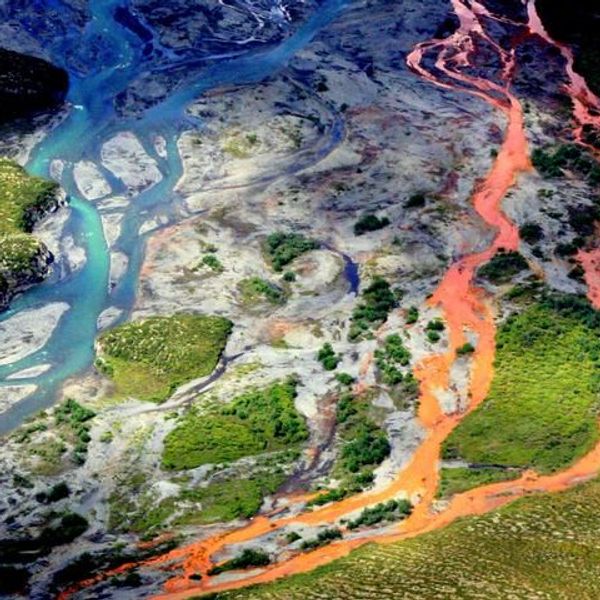Arctic Sea Ice Loss Prompts Biggest Change to Maps 'Since Breakup of USSR'
National Geographic cartographer: 'Until you have a hard-copy map in your hand, the message doesn't really hit home.'
Cartographers working on the latest edition of the National Geographic Atlas of the World say that Arctic sea ice loss is the greatest visible change compared with previous editions of the map outside of the "breakup of the U.S.S.R."
According to National Geographic, in the 10th edition of the Atlas, which will be released on September 30, the depiction of multiyear ice--or ice that has survived for at least two summers--is now a significantly smaller area than on previous maps.
"You hear reports all the time in the media about this," said National Geographic Geographer Juan Jose Valdes. "Until you have a hard-copy map in your hand, the message doesn't really hit home."
The dramatic loss of Arctic sea ice is one of the primary indicators of the effects of human caused global warming. Recent data from the National Snow and Ice Data Center showed that in March, when sea ice reached its maximum extent for the year, the amount of ice cover fell to its fifth lowest on record.
The latest Arctic map draws from data collected over a 30-year sea ice study conducted by NASA.
_____________________
An Urgent Message From Our Co-Founder
Dear Common Dreams reader, The U.S. is on a fast track to authoritarianism like nothing I've ever seen. Meanwhile, corporate news outlets are utterly capitulating to Trump, twisting their coverage to avoid drawing his ire while lining up to stuff cash in his pockets. That's why I believe that Common Dreams is doing the best and most consequential reporting that we've ever done. Our small but mighty team is a progressive reporting powerhouse, covering the news every day that the corporate media never will. Our mission has always been simple: To inform. To inspire. And to ignite change for the common good. Now here's the key piece that I want all our readers to understand: None of this would be possible without your financial support. That's not just some fundraising cliche. It's the absolute and literal truth. We don't accept corporate advertising and never will. We don't have a paywall because we don't think people should be blocked from critical news based on their ability to pay. Everything we do is funded by the donations of readers like you. Will you donate now to help power the nonprofit, independent reporting of Common Dreams? Thank you for being a vital member of our community. Together, we can keep independent journalism alive when it’s needed most. - Craig Brown, Co-founder |
Cartographers working on the latest edition of the National Geographic Atlas of the World say that Arctic sea ice loss is the greatest visible change compared with previous editions of the map outside of the "breakup of the U.S.S.R."
According to National Geographic, in the 10th edition of the Atlas, which will be released on September 30, the depiction of multiyear ice--or ice that has survived for at least two summers--is now a significantly smaller area than on previous maps.
"You hear reports all the time in the media about this," said National Geographic Geographer Juan Jose Valdes. "Until you have a hard-copy map in your hand, the message doesn't really hit home."
The dramatic loss of Arctic sea ice is one of the primary indicators of the effects of human caused global warming. Recent data from the National Snow and Ice Data Center showed that in March, when sea ice reached its maximum extent for the year, the amount of ice cover fell to its fifth lowest on record.
The latest Arctic map draws from data collected over a 30-year sea ice study conducted by NASA.
_____________________
Cartographers working on the latest edition of the National Geographic Atlas of the World say that Arctic sea ice loss is the greatest visible change compared with previous editions of the map outside of the "breakup of the U.S.S.R."
According to National Geographic, in the 10th edition of the Atlas, which will be released on September 30, the depiction of multiyear ice--or ice that has survived for at least two summers--is now a significantly smaller area than on previous maps.
"You hear reports all the time in the media about this," said National Geographic Geographer Juan Jose Valdes. "Until you have a hard-copy map in your hand, the message doesn't really hit home."
The dramatic loss of Arctic sea ice is one of the primary indicators of the effects of human caused global warming. Recent data from the National Snow and Ice Data Center showed that in March, when sea ice reached its maximum extent for the year, the amount of ice cover fell to its fifth lowest on record.
The latest Arctic map draws from data collected over a 30-year sea ice study conducted by NASA.
_____________________

